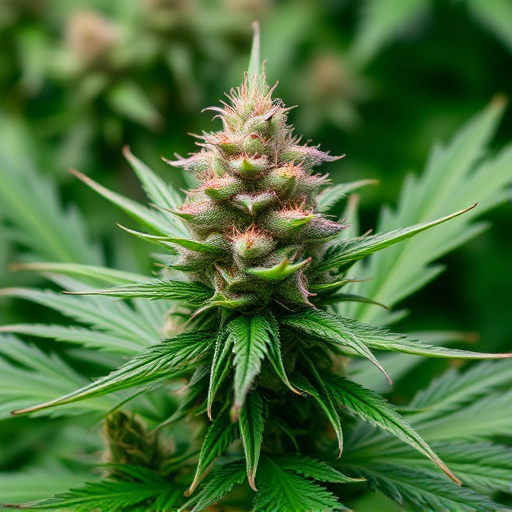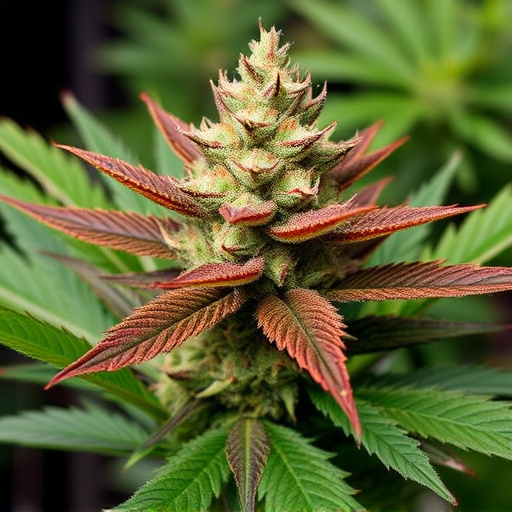Cannabis flower contains various chemical compounds, with THC and CBD being the most studied for their medicinal properties. New cannabis strains, developed through research, offer tailored treatments for diverse conditions, ranging from anti-inflammatory and anticonvulsant effects to pain relief and appetite stimulation. Terpene profiles further enhance therapeutic benefits. However, navigating regulations challenges access to these strains for patients and researchers. Future research should focus on clinical trials for managing chronic pain, epilepsy, and anxiety disorders, prioritizing patient safety and optimizing therapeutic outcomes.
“Unveiling the therapeutic potential of cannabis flower, this article explores its medical applications through a multi-faceted lens. We delve into the intricate world of cannabis, examining its chemical composition and how understanding its active compounds paves the way for groundbreaking treatments. Furthermore, we spotlight emerging research on new cannabis strains, showcasing their unique profiles and therapeutic advantages. As legal landscapes evolve, this piece also navigates regulatory considerations, offering insights into future research directions.”
- Understanding Cannabis Flower and Its Chemical Composition
- Exploring the Therapeutic Potential of New Cannabis Strains
- Navigating Legalities and Future Research Directions
Understanding Cannabis Flower and Its Chemical Composition

Cannabis flower, a staple in modern discussions about medical marijuana, is rich in chemical compounds that contribute to its therapeutic potential. At the heart of this power lies tetrahydrocannabinol (THC) and cannabidiol (CBD), two prominent cannabinoids found in varying concentrations across new cannabis strains. THC, known for its psychoactive effects, has been studied extensively for managing pain, stimulating appetite, and reducing anxiety. On the other hand, CBD, non-psychoactive, has gained popularity due to its potential anti-inflammatory, anticonvulsant, and anxiolytic properties.
Understanding the complex interplay of these cannabinoids and other minor compounds within cannabis flower is crucial. New cannabis strains often boast unique combinations, offering tailored medical benefits. Researchers continue to uncover more about these compounds’ effects on the human body, expanding the potential uses of cannabis in medicine.
Exploring the Therapeutic Potential of New Cannabis Strains

The world of cannabis is evolving, and one of the most exciting aspects is the continuous discovery of new cannabis strains with unique therapeutic properties. Beyond the well-known industrial hemp and medicinal marijuana varieties, researchers and cultivators are constantly exploring and developing novel strains with distinct chemical profiles. These new cannabis strains hold immense potential to address a wide range of medical conditions.
The focus on specific cannabinoids and terpenes found in these strains offers tailored treatments for various ailments. For instance, some strains may contain elevated levels of CBD, known for its anti-inflammatory and seizure-reducing properties, while others might boast potent THC content for pain management and appetite stimulation. Additionally, the aromatic terpene profiles contribute to the therapeutic experience, offering options for anxiety relief, sleep aid, or mood enhancement.
Navigating Legalities and Future Research Directions

Navigating the legal landscape surrounding cannabis remains a complex challenge, with varying regulations at both national and regional levels. This creates hurdles for both researchers and patients seeking access to medical cannabis, including new cannabis strains with potential therapeutic benefits. As laws continue to evolve, future research directions are clear: expanding clinical trials to explore the efficacy of diverse cannabis compounds and their interactions, particularly in treating conditions like chronic pain, epilepsy, and anxiety disorders. Unlocking the full potential of this versatile plant requires continued scientific investigation, informed by a robust evidence base, to ensure patient safety and maximize therapeutic outcomes.
The medical potential of cannabis flower, particularly with the emergence of novel cannabis strains, is a rapidly evolving field. Understanding the unique chemical composition of different varieties allows for the exploration of their therapeutic benefits, including pain management and reduced inflammation. As research continues to navigate legalities and uncover new insights, the future looks promising for expanding access to these potential game-changing treatments, especially with the discovery and development of new cannabis strains.














